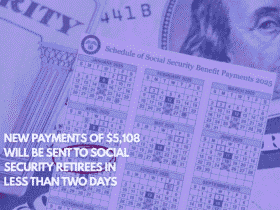Every month, millions of Americans rely on Social Security Disability Insurance (SSDI) to help cover their living expenses. If you’re one of them or expecting to apply, it’s important to stay up to date with payment schedules, benefit amounts, and new policy changes. Here’s a simple guide to what SSDI beneficiaries can expect in June 2025.
June 2025 SSDI Payment Dates Based on Birthdays
The Social Security Administration (SSA) follows a set schedule to send out SSDI payments. For those who started receiving benefits after May 1997, the payment date depends on your birthday.
If your birthday falls between:
- June 1 – 10 → You’ll receive your payment on Wednesday, June 11
- June 11 – 20 → Payment will come on Wednesday, June 18
- June 21 – 31 → You’ll get paid on Wednesday, June 25
For those who started getting SSDI before May 1997, the payment will be made earlier, on Tuesday, June 3. This date also applies to Supplemental Security Income (SSI) recipients, who will receive their benefits on May 30, due to the regular schedule placing June’s SSI payment at the end of May.

How Much Will SSDI Pay in June 2025?
SSDI benefits vary from person to person depending on past earnings and work history. After a 2.5% cost-of-living adjustment (COLA) in 2025, the maximum SSDI payment is now $4,018 per month.
However, most people receive much less than the maximum. The average monthly SSDI payment is about $1,580, according to SSA data shared by DisabilitySecrets.com. In fact, nearly two-thirds of beneficiaries get less than $1,600 each month.
If you also receive SSI benefits, the monthly amount could be up to $967 for individuals and $1,450 for couples.
Basic Requirements for Getting SSDI Benefits
To qualify for SSDI, you must:
- Have a medical condition that prevents you from working for at least 12 months.
- Meet income limits: No more than $1,620 per month if not blind, or $2,700 if blind.
- Have earned 40 work credits, with 20 of them earned in the last 10 years. (Younger applicants may have different rules.)
- Have paid into Social Security during your working years.
If you’re already receiving retirement benefits, you cannot collect SSDI at the same time.
Student Loan Debt Could Reduce SSDI Payments
Starting this June, the U.S. Treasury Department may begin withholding up to 15% of SSDI payments if you have defaulted on federal student loans. Around 452,000 beneficiaries could be affected, according to CNBC reports.
If you’re worried this might apply to you, visit your local SSA office or speak with a financial advisor. You may be able to make a repayment plan or take other steps to avoid a reduction in your SSDI income.











Leave a Reply